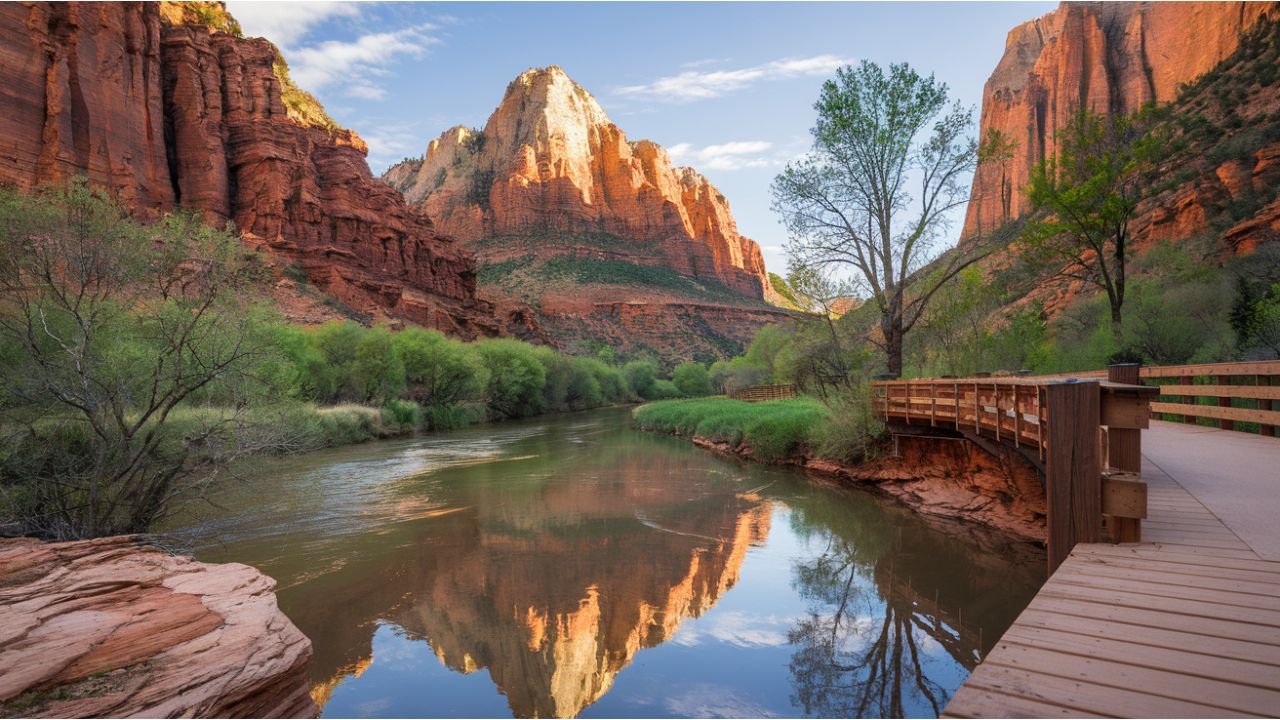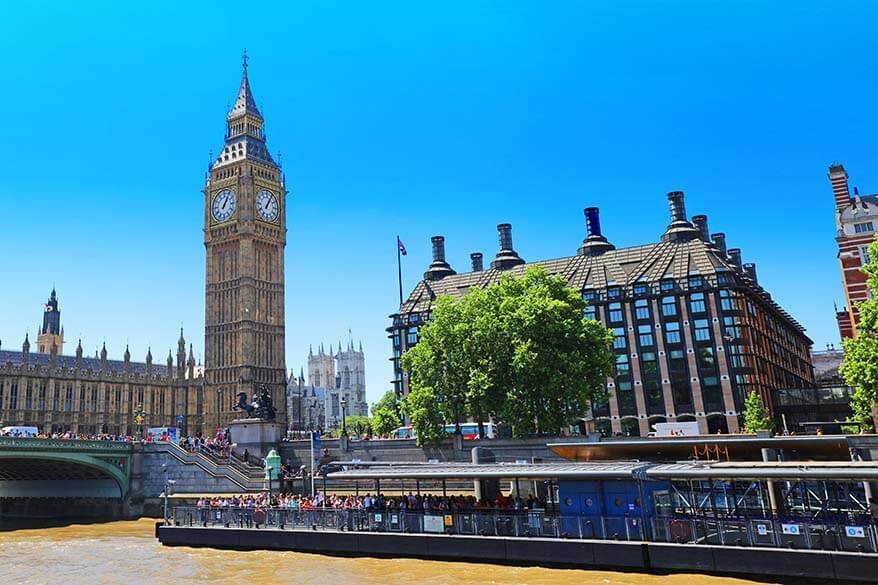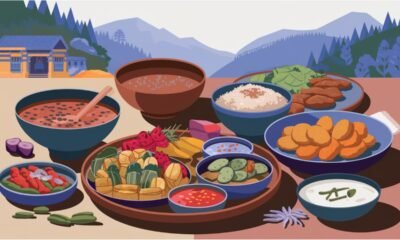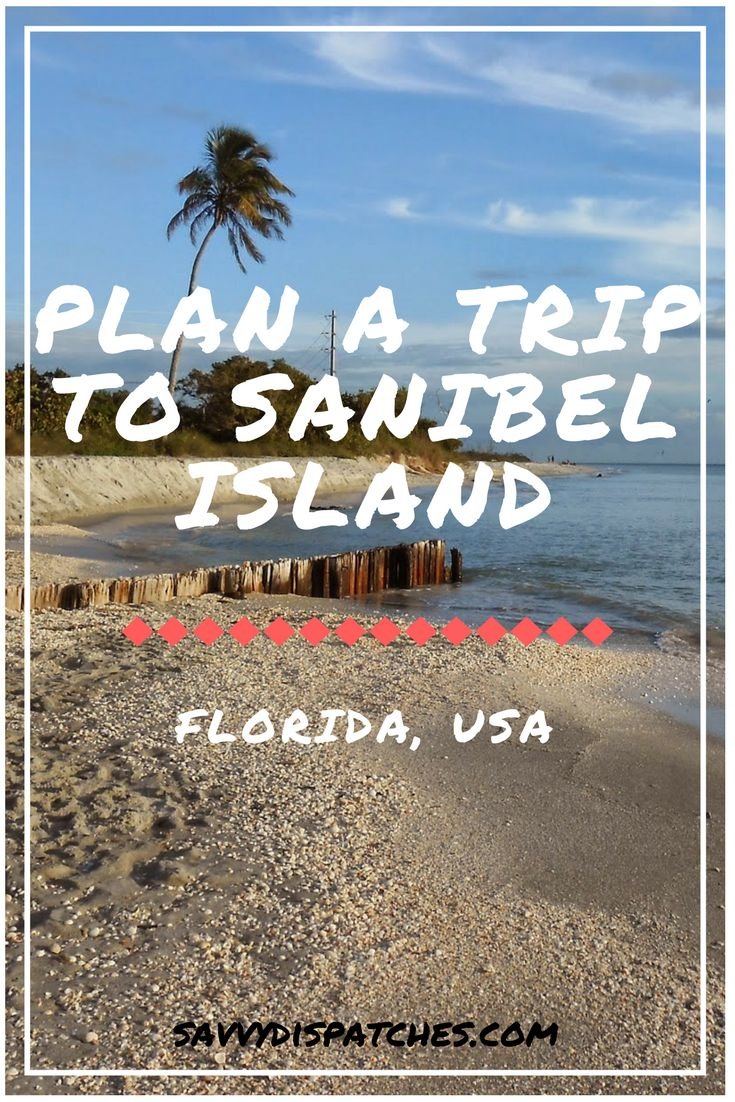Travel
Zion National Park: An Adventure Through Nature’s Majesty

Drawing millions of tourists annually, Zion National Park is among the most recognizable and frequented national parks in the United States. This natural beauty, which is in southwest Utah, features spectacular sandstone cliffs, rich flora, and a range of leisure activities fit for all kinds of explorers. Originally opened in 1919, Zion National Park is Utah’s first national park and still enthrals visitors with its distinct scenery, rich history, and active ecosystems.
The Beauty of Zion National Park
Towering red rock cliffs, small slot canyons, and green ponds, Zion National Park presents tourists with unmatched splendour. The Virgin River wanders over the park, forming its well-known canyons and giving life to its vegetation and fauna. From lofty plateaus to deep valleys, its scenes are a visual masterwork. Zion National Park has something amazing regardless of your interests—hiking, wildlife viewing, or photography.
A Brief History of Zion National Park
Zion National Park’s past mirrors the ongoing interaction between people and the environment. Native American tribes including the Southern Paiute people and the Ancestral Puebloans first called the area home. Petroglyphs and archaeological sites still visible today help these cultures to define their territory. Arriving in the late 1800s, Mormon colonists called the area “Zion,” a Biblical name meaning a haven. President Woodrow Wilson passed laws in 1919 designating Zion as a national park therefore guaranteeing its preservation for the next generations.
Exploring the Landscapes of Zion National Park
One of the most famous and varied landscapes in Zion National Park comprises tall cliffs, vast mesas, and verdant hanging gardens, the 229 Square mile park From the majestic Court of the Patriarchs to the tranquil Kolob Canyons, every place presents a different viewpoint on the natural splendour of the park. Visitors are urged to explore the park at their own speed while appreciating the breathtaking landscape that alters with the seasons.
The Virgin River and Its Impact
Zion National Park’s lifeblood is the Virgin River, which over millions of years cuts its path over sandstone. Zion Canyon, the most well-known element of the park, was created by this river. Apart from forming the terrain, the river sustains a rich ecology with many species of plants and animals. Walking along the banks of the river or exploring The Narrows, one of the most sought-after and distinctive hiking paths in the park, allows visitors to get close-ups.
Wildlife in Zion National Park
Zion National Park boasts quite an amazing range of species. The park boasts more than 200 different kinds of birds, including California condors and peregrine falcons. While reptiles and amphibians flourish in the warmer, wetter regions, mammals such as mule deer, bighorn sheep, and mountain lions prowl the tough terrain. For those who love animals, the park is a refuge since visitors sometimes find great excitement in coming across these species while exploring.
Must-See Attractions in Zion National Park
Angels Landing
Among the most well-known trails in Zion National Park, Angels Landing provides expansive vistas of Zion Canyon. This difficult path is an adrenaline-pushing journey with steep switchbacks and a tight slope. For those who are up to the endeavour, nevertheless, the amazing vistas from the top are well worth the effort.
The Narrows
One of the unusual hikes available to guests through the smallest portion of Zion Canyon is The Narrows. Surrounded by massive canyon walls, hikers wade across the Virgin River. Since water levels change with the season, proper footwear and preparation are absolutely vital.
Emerald Pools
A family-friendly climb, the Emerald Pools route winds to a sequence of gorgeous pools and waterfalls. Most guests can reach the Lower Emerald Pool; the Upper Pool calls for a more difficult climb. Every level presents breathtaking views and chances for picture taking.
Observation Point
One of the most amazing vistas in Zion National Park comes from Observation Point. The reward for the more difficult trek is a bird’s-eye perspective of the whole canyon. Angels Landing is not as demanding. Those looking for a less crowded experience will find the trail to provide seclusion and amazing views ideal for them.
Kolob Canyons
A quieter and less trafficked substitute for the main canyon is the Kolob Canyons part of Zion National Park. There are various hiking paths including the Taylor Creek Trail and the Kolob Arch Trail in this area, together with amazing red rock formations.
Best Hiking Trails in Zion National Park
One of the most often used sports in Zion National Park is hiking; the park provides paths suitable for any degree of ability. Easy walks like the Riverside Walk or the Pa’rus Trail—which offer breathtaking vistas without much effort—allow beginners to appreciate trails like Canyon Overlook or Watchman Trail could be preferred for intermediate hikers. Advanced travellers can attempt more difficult paths including the East Rim Trail, The Narrows, or Angels Landing.
Camping and Accommodations
One great approach to really appreciate Zion National Park’s natural splendour is camping there. Three campgrounds in the park are Lava Point Campground, Watchman Campground, and South Campground. Everyone offers a different camping experience with chances for wildlife viewing and star gazing. For those who want contemporary conveniences, adjacent cities such as Springdale provide hotels, lodges, and bed-and-breakfast lodging.
Best Time to Visit Zion National Park
Zion National Park is best visited in the spring and autumn when temperatures are moderate and the park is less busy. Although it’s the busiest season, summer may be hot—often with temperatures above 100 degrees Fahrenheit. With fewer people and the possibility of seeing the park’s cliffs covered in snow, winter presents a peaceful experience.
Photography Opportunities
A dream location for photographers, Zion National Park offers countless chances to capture its natural splendour. The most dramatic lighting comes from sunrise and sunset, therefore accentuating the vivid hues of the cliffs and valleys. Popular shooting locations are the Narrows, Angels Landing, and Emerald Pools; night photographers will value the park’s International Dark Sky Park classification.
Family-Friendly Activities
Families visiting Zion National Park will find lots of events suitable for every age. While the Pa’rus Trail is ideal for biking and strolling, the Junior Ranger Program provides informative events for kids. Families may easily enjoy the park using shuttle buses, free from parking concerns.
Conservation and Preservation
Long a symbol of environmental preservation, Zion National Park’s ecosystems and resource protection activities reflect this. Leave No Trace guidelines—such as packing out all waste and staying on approved paths—are urged of visitors. Through alliances with conservation groups and educational initiatives, the beauty of the park is guaranteed for the next generations.
Tips for a Safe Visit
Visiting Zion National Park calls for planning and knowledge of possible risks. Particularly in the monsoon season when flash floods are a possibility, hikers should pack lots of water, wear robust shoes, and be alert to the weather. Making prior plans and verifying trail conditions will help to guarantee a fun and safe visit.
Nearby Attractions
Part of Utah’s “Mighty Five,” Zion Nature Preserve is a great base for visiting neighbouring areas. Stunning hoodoos in Bryce Canyon National Park are just a short drive away. Additionally within reach and providing even more adventure possibilities are the Grand Canyon and Arches National Park.
The Cultural Significance of Zion National Park
Zion National Park’s name and past mirror its cultural value. The name “Zion” connotes a place of peace and refuge, which fits the calm setting of the park. The rich Native American history of the area adds to its cultural importance since petroglyphs and relics remind us of people who lived here long before it became a national park.
Hidden Gems in Zion National Park
Though well-known locations like Angels Landing and The Narrows get the most attention, Zion National Park is full of hidden treasures just waiting to be found. One-of-a-kind slot canyon, the Subway calls for advanced hiking abilities and permission. The Grotto Picnic Area gives a quiet place for rest; the East Mesa Trail presents a less congested path to Observation Point.
One place that ignites wonder and grabs the imagination is Zion Nature Preserve. Anyone looking for adventure or peace of mind should definitely visit this place for its breathtaking scenery, rich history, and great abundance of animals. Zion Nature Preserve provides an amazing experience that will leave you wishing to return whether your interests are in its famous paths, appreciation of its geological marvels, or just relaxation in its calm beauty.
Travel
A Local’s Guide to First-Time Travel in London

There’s a moment when your plane begins to descend and you glimpse the Thames curling like a silver ribbon through the sprawl — that’s when London starts working its quiet magic. It’s a city that defies neat introductions, layered in contradictions and stories. For a first-time visitor, it can feel like too much at once: the speed, the size, the sheer density of things to see. But travel here isn’t about racing from sight to sight; it’s about learning the city’s rhythm, the small human details between the monuments. This local guide will help you do just that — move confidently, see deeply, and find calm inside the chaos.
When to Come and What to Expect
London wears four distinct faces each year, and none is wrong. Spring is tender and full of promise; parks glow with cherry blossoms, and the air smells faintly of rain and new leaves. Summer stretches long into the night — the city spilling outdoors into rooftop terraces and music festivals. Autumn brings a kind of reflective beauty, soft light falling over the golden trees in Hyde Park and Richmond. Even winter, often maligned, has its charm: fewer crowds, fairy lights along Oxford Street, steaming cups of mulled wine at Southbank’s Christmas market.
If it’s your first time, choose a shoulder month — May or October — when the weather is kind, prices dip, and locals reclaim their streets. The pace slows enough for you to breathe.
Understanding the Shape of London
London isn’t a single organism; it’s a living mosaic of neighborhoods — each shaped by centuries of history, migration, and reinvention. What makes the capital so captivating isn’t just its monuments but the way every district feels like its own small town, complete with character, rhythm, and quirks. To really know London, you have to move through these smaller worlds one by one.
West London – Elegance and Old-World Charm
West London is where refinement meets tradition. Think wide, tree-lined avenues, white stucco terraces, and leafy garden squares. Kensington houses the Natural History Museum and Victoria & Albert Museum, while Notting Hill charms visitors with pastel townhouses, vintage bookshops, and the weekend bustle of Portobello Road Market.
Chelsea and Belgravia embody old-money sophistication, with boutiques, art galleries, and quiet streets where flowers spill over wrought-iron fences. Evenings here feel slower — dinner in a hidden brasserie, a walk by the Thames, a sense that the city exhales for a while.
East London – Creative Energy and Modern Edge
Across the river and a few Tube stops away, East London hums with creative energy. Shoreditch and Hoxton wear their street art proudly — every wall a mural, every alley a story. This is where vintage markets, independent cafés, and tech start-ups share the same postcodes.
On Brick Lane, curry houses sit beside record stores and art galleries, the air scented with spices and spray paint. Hackney stretches the city’s artistic pulse even further, with weekend markets, reclaimed warehouses, and parks that fill with picnics and music when the sun breaks through. East London never stands still — it’s where London experiments, reinvents, and sometimes contradicts itself entirely.
North London – Green Views and Quiet Corners
Head north and London slows down, trading skyscrapers for skyline views. Hampstead is one of the city’s most picturesque districts — cobbled lanes, cozy pubs, and the vast wild expanse of Hampstead Heath, where locals climb Parliament Hill for panoramic city views.
Nearby Primrose Hill and Highgate blend literary history with modern calm, their Victorian homes framed by climbing ivy and quiet gardens. North London offers space to breathe — ideal for travelers who love local cafés, parks, and the gentle rhythm of residential streets after a day of sightseeing.
South London – Green Space and Community Feel
Crossing the Thames changes everything. South London trades grandeur for greenery and a more local tone. Greenwich is steeped in maritime history, home to the Royal Observatory, the Cutty Sark, and one of the city’s best viewpoints across the river.
Further west, Dulwich and Crystal Palace mix creative studios with family-run pubs and independent shops. Life here moves at a slower pace; weekend farmers’ markets, leafy parks, and long brunches are the norm. It’s London at ease — authentic, lived-in, and quietly beautiful.
Central London – The Iconic Core
At the heart of it all lies Central London, where history and energy collide. Westminster, with Big Ben and the Houses of Parliament, anchors the political and royal center. Covent Garden bursts with street performers, artisan stalls, and hidden cocktail bars, while Soho mixes nightlife, dining, and cultural diversity in every sense.
Stroll along the South Bank for some of the best river views, crossing the bridges that link centuries of change. Central London is what you picture before you arrive — but it’s the surrounding districts that make the experience whole.
Exploring the Patchwork
Don’t try to “see London” in one sweep. Each area tells a story, and part of the joy is letting those stories unfold slowly. Use the Tube, Overground, or a classic black cab to move between them, but take time to walk. The shift in architecture, the smell of bakeries versus street food, the accents you hear — all reveal a new side of the city.
London is best understood not as one destination, but as a quilt of living neighborhoods stitched together by bridges, bus routes, and human connection. Once you see it that way, every journey — even a short one — feels like a small adventure of its own.
Arriving Gracefully
Your introduction to the city often begins at the airport, and with six of them, choosing how to arrive makes a difference. Heathrow and Gatwick handle most long-haul flights, while Stansted and Luton serve many European routes. London City and Southend cater to business and regional travelers. The distances vary — Heathrow is about 15 miles from central London, Luton closer to 35 — so your transport choice can shape the first hours of your trip.
Many visitors default to trains or buses, but locals know that landing weary and jet-lagged is no time for ticket machines or packed carriages. That’s why a pre-booked transfer can quietly elevate your arrival. Reliable services such as London Airport Taxi offer fixed-fare rides and professional drivers who monitor flights in real time. There’s something grounding about being met at arrivals, luggage handled, route sorted, and the city skyline drawing closer through the window.
If your flight brings you through Bedfordshire, the Luton Airport Taxi option delivers the same calm precision — door-to-door to your hotel or address, without the uncertainty of connections or surge pricing. London may be vast, but how you enter it can set the tone for the rest of your journey.
Moving Like a Londoner
Once you’ve arrived, movement becomes part of the experience. The London Underground — “the Tube” — is a masterpiece of efficiency, even if it feels maze-like at first. Every color on the map tells a story, every interchange a new layer of the city. Get an Oyster card or simply tap your contactless bank card on entry and exit; it’s the same price. During rush hour, stand on the right side of the escalator and let commuters dart past. This small gesture will spare you the sharp sighs of locals trying to make the 8:42.
Above ground, red double-decker buses offer slower, more scenic routes. Sit upstairs, front seat, and watch the city glide past: monuments, terraced homes, corner cafés. A single fare covers unlimited transfers for an hour — a bargain compared with most capitals. When time is short or luggage heavy, licensed black cabs are a London icon for a reason. Drivers train for years to master “The Knowledge,” knowing every backstreet by heart. For longer journeys or airport returns, a pre-booked car often works out cheaper and far less stressful.
And then there’s walking — still the best way to know London. The city reveals itself in textures: cobblestones slick with drizzle, the scent of bread near Borough Market, the hum of conversation outside Soho cafés. Give yourself permission to wander without a destination.
Where to Rest Your Head
Choosing where to stay isn’t just about price; it’s about atmosphere. The center keeps you close to the classics — Westminster’s landmarks, Covent Garden’s buzz, the South Bank’s riverfront. Rooms cost more here, but you gain precious time and energy. West London is timeless and refined; East London more playful and artistic, with warehouse lofts and boutique hotels hidden behind graffiti-covered walls. North London charms with village quiet, South London with leafy calm.
What matters most is proximity to the Tube — ideally within a ten-minute walk. London sprawls, and shaving fifteen minutes off each journey means you’ll actually have time to linger where you want to be.
If you crave character, pick small over grand. A townhouse B&B in Bloomsbury or an apartment in Notting Hill often tells a richer story than another chain hotel lobby.
What to See — and What to Feel
Everyone arrives with a checklist: Buckingham Palace, Big Ben, the Tower of London, St Paul’s Cathedral. They’re famous for good reason, and seeing them in person will still stir you. But the heart of London beats elsewhere — in its moments between the landmarks. Spend a morning wandering the South Bank, street performers below the London Eye, and watch the sunlight shift across the river. Cross the Millennium Bridge to the Tate Modern, then lose track of time in its echoing halls.
Slip into a side street and find the smaller wonders: the ruined garden of St Dunstan in the East, the pastel facades of Neal’s Yard, the hush of Temple Church tucked behind Fleet Street. Walk through Borough Market at noon, tasting fresh bread and local cheese, or climb Primrose Hill at sunset for a skyline view locals never tire of. In Camden, hear buskers under the bridges; in Greenwich, stand where the world’s time begins.
The best experiences aren’t always on maps. They happen when you pause long enough to let London surprise you.
Eating and Drinking Like You Belong
Food in London is a reflection of its people — global, inventive, sometimes eccentric. You’ll find Michelin-starred temples of cuisine sitting beside Pakistani curry houses, Jamaican jerk stands, and late-night ramen bars. For traditional flavors, try fish and chips from a proper chippy, a full English breakfast at a local café, or Sunday roast with Yorkshire pudding at a pub in Clerkenwell. Afternoon tea remains a rite of passage: tiered trays, clotted cream, and quiet indulgence under chandeliers.
Markets are where the city’s appetite really comes alive. Borough Market near London Bridge brims with artisan cheese, Ethiopian coffee, and handmade pastries. Camden Market serves global street food beneath the railway arches. On weekends, Maltby Street in Bermondsey feels like a secret known only to locals — narrow lanes, sizzling grills, and the smell of fresh dough.
When evening falls, head to a pub. Some are centuries old, their beams dark with history. Order at the bar, make conversation, and you’ll soon feel the difference between tourist London and local London. Tipping isn’t mandatory here; rounding up the bill or saying “cheers” is enough.
If you prefer a quieter night, climb to a rooftop bar or find a riverside terrace. London after dark has a softer pulse — lights reflecting on the Thames, music drifting from hidden courtyards, the sense that life here never really stops, it just changes key.
The Practical Stuff Nobody Tells You
London rewards planning, but it also tests patience. The currency is the British Pound, and almost everywhere accepts contactless cards. Keep a small amount of cash for markets or tips, but you’ll rarely need it. The weather, famously unpredictable, can shift from sunshine to drizzle in an hour — carry a compact umbrella and don’t let grey skies dampen your mood; locals barely notice the rain anymore.
Public Wi-Fi is widely available, but buying a local SIM or eSIM will save you frustration when navigating. Power sockets use the three-pin Type G plug — don’t forget an adaptor. Safety-wise, London is friendly and secure; just keep your bag zipped and stay alert in crowded spots. On public transport, mind the gap, respect the queue, and avoid blocking doors. Small courtesies make big differences here.
Most of all, give yourself time. Travel distances can be deceptive. A journey that looks short on a map might take 40 minutes once transfers and crowds come into play. Factor that breathing room into your days, and you’ll move through the city like you belong.
Suggested Flow for a First Visit
Start centrally. Spend your first full day grounding yourself among the icons — Westminster, the Thames, Trafalgar Square. These places orient you. The second day, branch outward to history and art: the Tower of London in the morning, then cross Tower Bridge and drift through the galleries of the Tate Modern. On your third, wander neighbourhoods — Notting Hill for colour, Camden for energy, Greenwich for calm. Each shows a different face of the same city.
If you have more time, use it for depth rather than distance. Visit a local theatre, picnic in Regent’s Park, or take a day trip to Windsor or Oxford. London’s train network makes short escapes effortless, but it’s the return that reminds you why this city holds you — stepping back onto its pavements feels like rejoining an old conversation.
Before You Leave
London will change you in quiet ways. You’ll catch yourself measuring time by Tube stops, craving another walk along the river, recognising landmarks from films not as pictures but as places you’ve stood. The city rewards curiosity far more than speed.
When it’s time to head back to the airport, leave earlier than you think you need to. Morning traffic can stretch forever, and train delays are part of the local folklore. Booking a taxi ahead of time means your departure ends the way your arrival began — calm, unhurried, looking out the window as the skyline recedes.
Whether you spent three days or three weeks, remember that London never truly fits into one visit. It’s a place you collect over time — a café here, a park bench there, a conversation that lingers. The more you return, the more it opens itself to you.
A Final Word
For a first-time traveler, London can seem overwhelming — but that’s its gift. Every sound, every turn, every contrast invites you to see the world’s biggest small town through your own eyes. Don’t chase it; walk with it. Sip tea slowly, listen to the accents around you, watch rain gather on red bus windows. That’s where the real city lives — not just in the sights you photograph, but in the moments you almost didn’t notice.
And when you leave, you’ll already be planning how to come back — not as a stranger this time, but as someone who knows their way from the airport to the heart of London, ready for another chapter.
Destinations
Mini Glasto, Major Fun: How the Isle of Wight Rocks for Families

Imagine the wind in your hair, music all around, kids laughing and dancing, and the sea just a stroll away.
That’s what it feels like to get tickets at the Isle of Wight Festival — the ultimate family-friendly music event that gives a nod to legendary festivals like Glastonbury Festival, but in a sweet, more manageable package.
Why it’s perfect for families
From toddlers to teens (and yes, grown-ups too), this festival pulls in a crowd where everyone can have fun together. There’s a dedicated kids zone called “Kidzone” with crafts, quiet spaces, story-times, and chill-out spots for little ones. It’s not just an add-on — it was built with families in mind.
There are also general camping areas with a relaxed vibe, home to families who’ve come to soak up music, nature, and time together.
One parent on Reddit described it simply: “It’s exceptionally family friendly… you’ll get 16-70s enjoying themselves.”
Getting tickets — what you need to know
Getting your tickets is easy, but there are a few smart moves to get the best experience:
- Family & Children’s Tickets: Children under 12 often go free with a paying adult. That means big savings and fewer worries.
- Choose your ticket type: You can buy a day ticket or a full weekend ticket (with camping). For full immersion and the real festival feel, the weekend ticket is the way.
- Book early: The best tickets and camping spots go fast. If you wait too long you might face higher prices or fewer options.
- Book children’s tickets at the same time as adults: Some ticket types require you to add kids at the time of adult booking. Don’t leave this for later.
- Check age rules: Every child must be accompanied by an adult aged 18+ and you’ll need proof of age for the kids.
- Camping vs day-trip: If you pick the camping option, consider bringing a small tent and some creature comforts. Families love the community feel in the camping fields.
- Budget for extras: While tickets cover entry, you’ll want to plan for food, maybe some workshop fees or merchandise.
- Ferry & accommodation: Since the festival is on an island, plan your transport and stay early. It makes a difference.
Why this is the “mini Glasto” for families
You get big-festival energy minus the overwhelming scale. Family-friendly activities pop up all over the site. You can bounce between the main stage headliners and the kids zone, where littler ones build cardboard creations, enjoy sensory pla,y or just relax in a toddler chill-out space.
Meanwhile, older siblings can check out live acts or hang with friends in safe zones. There’s also ease of access: You won’t feel like you’re lost in a sea of 50,000 strangers. You’ll be part of a buzzing atmosphere, yes, but still home with your family at the end of the day.
Quick checklist before you buy
- Decide if you want day-pass or weekend & camping.
- Make sure all family names and ages are added correctly in your booking.
- Confirm sleeping/camping gear if you stay overnight.
- Set a budget for food, fun zones, and perhaps upgrades.
- Check travel logistics: ferry, shuttle, bags & access.
- Bring ear protection for younger kids — loud music plus little ears need a bit of care.
- Pack for weather: a bit of sunshine, a bit of rain — layers are your friend.
Final thoughts
There’s something magic about combining a music festival with a family trip: you’re not just watching bands — you’re making memories. The Isle of Wight Festival gives you that. It’s loud, colourful, full of life … and also safe for kids and friendly for parents.
Get your tickets early, plan the trip, and get ready for a soundtrack to your family’s best holiday yet. Let the music start. 🎉
Travel
The Ultimate Tuscan Itinerary: A 10-Day Road Trip Based in a Private Lucca Villa

Imagine a different kind of journey. One where your days are filled with discovery—exploring marble mountains, medieval hamlets, and sun-drenched coastlines—but your evenings are a welcome return to a place that feels like home. A place with a private pool shimmering under the stars, a kitchen filled with the fresh bounty from a local market, and the space to truly unwind. This is the promise of a Lucca-based road trip, a “hub-and-spoke” adventure that combines the thrill of exploration with the unparalleled comfort of a private villa.
This 10-day itinerary is designed for the savvy traveler who craves both authenticity and luxury. It uses the enchanting walled city of Lucca as a strategic and soulful anchor, allowing you to dive deep into the heart of northern Tuscany without the logistical headaches of a traditional multi-stop trip. Prepare to experience Italy not as a tourist, but as a temporary local, with the keys to your own Tuscan sanctuary.
Day 1: Arrival in Lucca and the Art of Settling In
Your Tuscan adventure begins the moment you touch down at Pisa International Airport (PSA) or Florence Airport (FLR), both convenient gateways to the region. Pick up your rental car—an essential companion for the days ahead—and feel the excitement build as you leave the city bustle behind. The drive to Lucca is a short, scenic introduction to the landscape, with views of the Apuan Alps in the distance.
Afternoon: Your Villa Awaits
Arrive at your private villa, your home for the next ten days. This isn’t just a place to sleep; it’s the centerpiece of your experience. Take the time to truly settle in. Unpack completely, hang up your clothes, and stock the pantry. Open the French doors, breathe in the fragrant air, and perhaps pour your first glass of local Vermentino. Explore the grounds, take a dip in the pool, and let the gentle rhythm of Tuscan life begin to wash over you. The first afternoon is dedicated to decompression. There is no schedule to keep, no landmark to check off a list. Your only task is to embrace the luxury of having your own private space in one of the most beautiful corners of the world.
Evening: A Stroll on Lucca’s Walls
As the sun begins to dip, head into Lucca itself. The city’s most unique feature is its perfectly preserved Renaissance-era walls, which have been transformed into a wide, tree-lined promenade. Join the locals for their evening passeggiata (stroll), renting a bike or simply walking the 4.2-kilometer loop. From this elevated perspective, you can peer down into hidden gardens, admire the terracotta rooftops, and get a feel for the city’s layout. For dinner, choose a classic trattoria in the city center, like Trattoria da Leo, for a no-frills, delicious introduction to Lucchese cuisine. Order the tordelli lucchesi, a local meat-filled pasta, and toast to the journey ahead.
Day 2: Marble Mountains and Coastal Glamour
Today is a day of dramatic contrasts, taking you from the stark, white peaks of the Apuan Alps to the chic, sandy shores of the Versilia coast. It’s a journey that showcases the incredible diversity of terrain just a short drive from Lucca.
Morning: The World of Carrara Marble
Drive north towards Carrara, a name synonymous with the world’s most coveted marble. This is the very stone Michelangelo used for his David. The journey itself is breathtaking, as the mountains reveal their “snow-capped” peaks, which are in fact exposed white marble.
- Guided Quarry Tour: Book a 4×4 Jeep tour to take you deep into the heart of the quarries. It’s an otherworldly experience, driving through landscapes of pure white, learning about the centuries-old excavation techniques that are still in use today.
- Colonnata’s Culinary Secret: For a truly unique lunch, drive up to the tiny quarrying village of Colonnata. Here, you’ll find Lardo di Colonnata, a cured pork fat that is aged for months in marble basins. Visit a local larderia to sample this savory delicacy, typically served thinly sliced on warm bread.
Afternoon: Viareggio and Forte dei Marmi
From the rugged mountains, descend to the coast. The Versilia is Tuscany’s answer to the French Riviera. Start in Viareggio, known for its beautiful Art Nouveau architecture along the seaside promenade. Then, continue to the ultra-exclusive Forte dei Marmi. This is where Italy’s elite come to play. The town is filled with high-end designer boutiques, elegant beach clubs, and beautiful people. Even if you don’t rent a cabana, a walk along its pristine beach and a browse through its stylish streets is an experience in itself. Enjoy an aperitivo at one of the chic beachfront cafes, watching the sun set over the Ligurian Sea before making the easy drive back to your villa.
Day 3: Pisa and a Touch of Pisan Hills Wine
No trip to this part of Tuscany is complete without seeing the iconic Leaning Tower, but today’s itinerary pairs this world-famous sight with a deeper dive into the surrounding countryside, revealing a region known for its excellent, lesser-known wines.
Morning: Beyond the Lean in Pisa
The key to visiting Pisa is to go early. Arrive before the main crowds descend on the Piazza dei Miracoli (Square of Miracles). The architectural ensemble here is truly stunning, and includes not just the Tower, a marvel of medieval engineering gone wrong, but also the magnificent Cathedral (Duomo) and the Baptistery.
- Climb the Tower: If you have a head for heights, pre-book tickets to climb the 294 steps to the top. The view is spectacular, and the feeling of climbing the tilted spiral staircase is unforgettable.
- Explore the Rest of the City: Don’t just stay in the Piazza. Wander across the Arno River into the city proper to discover the real Pisa. Explore the bustling market at Piazza delle Vettovaglie and stroll along the Borgo Stretto for a more authentic local experience.
Afternoon: Wine Tasting in the Colline Pisane
Leave the city behind and head south into the Pisan Hills (Colline Pisane). This rolling landscape is dotted with vineyards and olive groves and produces exceptional Sangiovese-based red wines. Visit a family-run winery like Tenuta di Ghizzano or Badia di Morrona for a guided tour and tasting. You’ll learn about the terroir and production methods, and sample wines that rival those from more famous Tuscan regions, often at a fraction of the price. The intimate, personal nature of these smaller wineries provides a stark contrast to the crowds of Pisa. Enjoy a leisurely drive back to Lucca, perhaps with a few new bottles to enjoy by your pool.
Day 4: A Day of Relaxation and Culinary Arts at Your Villa
One of the greatest luxuries of a villa-based vacation is the freedom to do nothing at all. Today is about recharging and immersing yourself in the Tuscan lifestyle right where you are. It’s a pause that makes the days of exploration even more rewarding.
Morning: Local Market and Leisure
Start the day with a trip to a local market. If it’s a Wednesday or Saturday, the Mercato Storico at Piazza Anfiteatro in Lucca is a must. If not, find a smaller neighborhood market or a well-stocked alimentari (deli). This isn’t just a shopping trip; it’s a cultural immersion. Engage with the vendors, ask for their recommendations, and gather the freshest local ingredients: sun-ripened tomatoes, fragrant basil, handmade pasta, local cheeses like Pecorino, and freshly pressed olive oil.
Return to your villa and spend the rest of the morning at your leisure. Read a book by the pool, go for a swim, or simply sit on the terrace and enjoy the view.
Afternoon: Private Cooking Class
Arrange for a private chef to come to your villa for a hands-on cooking class. This is an unparalleled experience that allows you to learn the secrets of Tuscan cuisine in the comfort of your own kitchen. You’ll work with the ingredients you purchased in the morning, learning to prepare classic dishes like panzanella (bread salad), handmade gnocchi, or a perfect bistecca alla fiorentina. The experience culminates in a magnificent dinner, enjoying the fruits of your labor without having to worry about driving home. It’s an intimate, educational, and delicious way to connect with the local culture.
Day 5: The Enchanting Garfagnana and a Devil’s Bridge
Head north from Lucca into a different Tuscany—a wilder, more mountainous region known as the Garfagnana. This is a land of dense chestnut forests, hidden medieval villages, and breathtaking mountain scenery, offering a refreshing break from the classic rolling hills.
Morning: The Devil’s Bridge and Barga
Your first stop is the Ponte della Maddalena, more famously known as the “Devil’s Bridge,” near the town of Borgo a Mozzano. This striking 11th-century bridge features a dramatically high, asymmetrical arch, and is shrouded in fascinating local legends.
Continue driving deeper into the valley to the town of Barga. Perched on a hilltop, it is officially recognized as one of “I Borghi più belli d’Italia” (The Most Beautiful Villages in Italy). Park outside the walls and wander through its steep, cobbled lanes. Make your way to the top to visit the Duomo di San Cristoforo, a stunning example of Romanesque architecture that offers panoramic views of the surrounding mountains. The town has a unique and strong connection to Scotland, due to historic emigration, so don’t be surprised to hear a Scottish accent or see a red telephone box!
Afternoon: Grotta del Vento and a Rustic Lunch
For the adventurous, a visit to the Grotta del Vento (Cave of the Wind) is a must. This extensive cave system offers guided tours of varying lengths, taking you past incredible stalactites, stalagmites, and underground rivers.
For lunch, find a traditional osteria in one of the small villages like Castelnuovo di Garfagnana. This is the place to try regional specialties like spelt soup (zuppa di farro), polenta with mushrooms, and cured meats from the area. The drive back to Lucca in the late afternoon, as the light softens over the mountains, is a perfect end to a day of rugged exploration.
Day 6: Florence by Train – Art and History Without the Drive
While the beauty of a road trip is the car, the smartest way to visit Florence from Lucca is by train. The direct train service is frequent, affordable, and takes you directly into the city center in about 90 minutes, allowing you to avoid the notorious traffic and parking challenges of the Renaissance capital.
Morning: Renaissance Masterpieces
Focus your morning on the essentials, but do it smartly. Pre-book your tickets online months in advance to avoid hours-long queues.
- Accademia Gallery: Start here to see Michelangelo’s David. Seeing it in person is a profound experience that no photograph can replicate.
- Piazza del Duomo: Marvel at Brunelleschi’s magnificent dome, Giotto’s bell tower, and the Baptistery. The sheer scale and beauty are overwhelming.
- Uffizi Gallery: If you are a true art lover, dedicate a few hours to this world-class museum. If your time is limited, perhaps skip it in favor of soaking up the city’s atmosphere.
Afternoon: The Oltrarno and a View from Above
Cross the iconic Ponte Vecchio bridge into the Oltrarno district. This is the artisan quarter of Florence, an area filled with workshops, antique stores, and authentic trattorias. It’s the perfect place to find a unique, handcrafted souvenir and enjoy a relaxed lunch.
In the late afternoon, make the climb up to Piazzale Michelangelo. This terrace offers the definitive panoramic postcard view of Florence, with the Duomo, Palazzo Vecchio, and the Arno River laid out before you. It’s the perfect spot to watch the city glow in the golden hour before heading back to the Santa Maria Novella station for your relaxing train ride back to Lucca.
Day 7: The Wine Roads of Montecarlo and Leonardo’s Hometown
Today, you’ll explore the charming wine region right on Lucca’s doorstep before venturing a bit further to the birthplace of the ultimate Renaissance man, Leonardo da Vinci.
Morning: Montecarlo’s White Wines
Just east of Lucca lies the small but prestigious DOC wine region of Montecarlo. While Tuscany is famous for its reds, Montecarlo is celebrated for its crisp, elegant white wines (Montecarlo Bianco), a blend that often includes Trebbiano, Sémillon, and Pinot Grigio. The landscape is a picturesque tapestry of vineyards and olive groves. Visit a renowned estate like Tenuta del Buonamico for a tour of their cellars and a tasting of their award-winning wines, both white and red. The “hub-and-spoke” approach to travel is precisely what makes the choice of one of the premier luxury villa rentals in Tuscany not just an indulgence, but a strategic advantage for the discerning explorer, allowing for easy, relaxed day trips like this one.
Afternoon: In the Footsteps of Leonardo in Vinci
From Montecarlo, drive southeast to the town of Vinci, the birthplace of Leonardo. The town is a pilgrimage site for admirers of his genius.
- Museo Leonardiano: This museum, housed in two separate buildings, showcases reconstructions of Leonardo’s ingenious machines, from flying contraptions to military weapons. It’s a fascinating look into the mind of a true visionary.
- Leonardo’s Birthplace: A short drive or a pleasant walk through olive groves takes you to the simple farmhouse in Anchiano where Leonardo was born in 1452. The house itself is modest, but the sense of place and the beautiful views that likely inspired his early landscape drawings are palpable.
Enjoy the scenic drive back to your villa, reflecting on a day that perfectly blends the pleasures of the palate with the inspiration of genius.
Day 8: Sun, Sand, and Culture in Versilia’s Quieter Corners
Return to the Versilia coast, but this time, explore its more artistic and laid-back side, away from the glitz of Forte dei Marmi.
Morning: Pietrasanta, the City of Artists
Pietrasanta is known as “Little Athens” for its deep connection to art, particularly sculpture. Thanks to its proximity to the Carrara marble quarries, it has been a magnet for artists for centuries, including Michelangelo and, in modern times, Henry Moore and Fernando Botero. The town is essentially an open-air museum.
- Piazza del Duomo: The main square is filled with temporary, large-scale sculptures from internationally renowned artists.
- Art Galleries and Workshops: Wander the streets and you’ll find countless art galleries, bronze foundries, and marble workshops (laboratori). Many are open to visitors, offering a chance to see artisans at work.
- Museo dei Bozzetti: This unique museum houses a collection of plaster models and sketches, the initial drafts for sculptures that are now displayed all over the world.
Afternoon: Relaxation at Marina di Pietrasanta
After a morning of culture, head to the nearby beach at Marina di Pietrasanta. It’s more relaxed and family-friendly than Forte dei Marmi but still offers excellent beach clubs (bagni) where you can rent an umbrella and loungers for the afternoon. Enjoy a long, leisurely seafood lunch at a restaurant on the beach with your feet practically in the sand. Spend the rest of the day swimming, sunbathing, and enjoying the simple pleasures of the Italian seaside before your short drive back home.
Day 9: A Journey to the Cinque Terre
While not technically in Tuscany, the five famed villages of the Cinque Terre are an unmissable and surprisingly accessible day trip from Lucca. The key is to drive to La Spezia, park your car at the train station, and use the local train to hop between the villages.
All Day: Exploring the Five Lands
The Cinque Terre Express train runs frequently and connects all five villages: Riomaggiore, Manarola, Corniglia, Vernazza, and Monterosso al Mare. It’s best to choose three or four villages to explore to avoid rushing.
- Vernazza: Often considered the most picturesque, with its natural harbor, colorful houses, and ancient watchtower.
- Manarola: Famous for its vineyards that cling precariously to the cliffs. The walk up to the Punta Bonfiglio viewpoint offers the classic photo opportunity.
- Monterosso al Mare: The largest of the villages and the only one with a proper, long sandy beach. It’s a great place to stop for a swim and lunch.
- Riomaggiore: A classic fishing village with steep, colorful buildings cascading down to a tiny harbor.
Hike a portion of the famous Sentiero Azzurro (Blue Trail) if it’s open (check conditions beforehand, as trails can close due to landslides). The stretch from Monterosso to Vernazza is challenging but offers breathtaking views. At the end of the day, take the train back to La Spezia and return to your Lucca villa, tired but exhilarated by the dramatic coastal beauty.
Day 10: One Last Cappuccino and Departure
On your final day, the pace is slow and reflective. Enjoy a final, leisurely breakfast on your villa’s terrace. Take one last swim in the pool, savoring the peace and privacy that has been your anchor throughout this incredible journey.
Morning: Last-Minute Souvenirs in Lucca
Head into Lucca for one last walk. This is the perfect time to pick up any last-minute gifts or souvenirs. Look for local specialties like buccellato (a sweet, anise-flavored bread), high-quality olive oil, or a beautiful piece of local ceramic. Sit in a cafe in Piazza San Michele, order a cappuccino, and simply watch the world go by, cementing the memories of the past ten days.
Depending on your flight schedule, make the easy drive back to Pisa or Florence airport. As you head home, you’ll carry with you not just photographs, but a deep sense of connection to a place you were able to experience on your own terms, with the freedom of the open road and the comforting embrace of a home away from home. This is the real magic of Tuscany, unlocked one day trip at a time.

 Blog10 months ago
Blog10 months agoHow to Deal with Scabies While Traveling

 Travel10 months ago
Travel10 months agoRichmond, Virginia Street Art Guide

 Travel10 months ago
Travel10 months agoPerhentian Islands: How to Get There, What to Expect, & More

 Travel10 months ago
Travel10 months agoHow to Live in Your Car in New Zealand

 Travel10 months ago
Travel10 months agoSouvenir in Nepal: A Guide to Unique Handicrafts and Cultural Treasures

 Travel10 months ago
Travel10 months agoVegan Guide to Dining Out in Richmond, Virginia

 Food10 months ago
Food10 months agoVegetarian Food Nepal: A Journey into Flavorful Plant-Based Cuisine

 Travel7 months ago
Travel7 months agoA Local’s Guide to Sanibel Island, Florida















